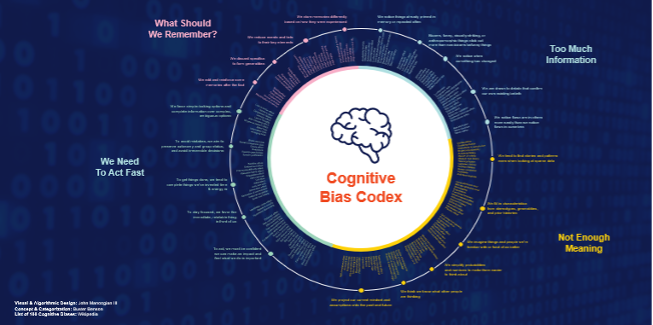By Charles Obiajulu Ugwu- PhD
Executive Summary
The world is not short on managers. It is starved of meaning-makers. This white paper proposes a radical departure from the stagnant, industrial-age imagination of leadership and offers in its place The Leadership Codex: a new modality for human and institutional propulsion in a time of ontological disruption. Drawing from quantum cognition, symbolic literacy, AI-human synergy, and ecological intelligence, the Codex is not a leadership strategy. It is a generative act of sense-making for a world no longer navigable by procedural wisdom or corporate orthodoxy.
Across industries and governments, the crisis is not just about efficiency or disruption; it is about legitimacy, coherence, and the inability of leaders to metabolize complexity into direction. In 2023, the Edelman Trust Barometer reported that 63% of people globally believe their societal leaders are deliberately misleading them. In an era saturated with data and devoid of orientation, what we need is not more dashboards, but catalytic orientation.
This white paper is a call to reframe leadership as a field of generative influence that is recursively meaningful, technologically amplified, ecologically intelligent, and symbolically coherent.
- The Terminal Crisis of Legacy Leadership
Leadership in its current form is not merely insufficient—it is the residue of a bygone epistemic era. Rooted in the bureaucratic and industrial logics of the 19th and 20th centuries, most leadership paradigms today are scaled versions of managerial paternalism. Their metaphors are mechanical: levers, pipelines, benchmarks. Their language is technical: optimization, alignment, execution. Their rituals are sterile: quarterly reviews, cascade communications, performance matrices.
But the world has moved. The climate won’t stabilize. AI is no longer a tool but a co-agent. Geopolitics is fractured, and legitimacy—once assumed—now requires daily renewal.
Case in point: the COVID-19 pandemic was not a health crisis alone. It was a leadership stress test. And it exposed a vast incapacity to generate collective coherence, to produce culturally resonant narratives, and to mobilize adaptive response in nonlinear conditions. The same leadership cultures that obsessed over “resilience” proved incapable of basic recalibration.
Even institutions designed for future stewardship have faltered. In 2022, internal audits of the UN Development Programme revealed massive inefficiencies and fragmented sense-making in climate response leadership—despite having access to the most advanced data ecosystems.
This is not a failure of information. It is a collapse of meaning production.
The Codex Proposition: Beyond Strategy, Toward Symbolic Sovereignty
The Leadership Codex is a rupture from the obsolete. It is not a tweak. It is a reconstitution of what leadership is—a shift from doing to being, from hierarchy to entangled responsibility, from power to pattern.
This Codex rests on five interlocking propositions:
Entangled Cognition
Leadership is not the projection of command but the deep presence of relational coherence. Inspired by quantum entanglement, we understand leaders as pattern activators—their decisions reverberate through networks, emotions, cultures, and future trajectories. Influence is no longer linear; it is recursive, invisible, and symbolic.
Example: In 2019, Prime Minister Jacinda Ardern’s empathetic and culturally literate response to the Christchurch shootings—refusing to name the gunman, embracing the grieving Muslim communities—demonstrated entangled cognition. She did not manage a crisis; she restored symbolic equilibrium.
Propulsion Over Process
The fetish for procedural clarity has become a form of cognitive anesthesia. Processes are necessary, but they must never eclipse directional energy. The Codex prioritizes propulsion—what generates movement, possibility, and coherence—over systems that merely preserve what is.
A McKinsey Global Survey (2023) found that 70% of transformation programs stall not due to lack of resources, but due to what respondents described as “symbolic fatigue”—the erosion of meaning beneath initiatives.
Meaning as Primary Currency
When leaders cease to produce orientation, communities decay into cynicism. Leadership is not management at scale; it is symbolic metabolism—the ability to translate chaos into coherence, paradox into purpose.
Zelenskyy’s wartime communication wasn’t polished, but it was metabolically potent. Wearing fatigues, speaking from bunkers, refusing escape—he became a node of narrative coherence for a fractured populace.
Self-Renewal as Competence
Static leaders in dynamic systems create drag. In a regenerative frame, leadership is not a stable trait but a living process of epistemic renewal. This requires unlearning, symbolic death, and re-orientation. Think less of “growth mindset” and more of ritualized molting.
In Kenya, the grassroots platform Ushahidi—a crisis mapping tool developed after the 2007 election violence—constantly rewires itself through open-source contribution and community intelligence. It is a case of technological self-renewal inspired by cultural adaptability.
Technological Entanglement
AI is not a threat to leadership—it is a co-agent. The Codex proposes a future where synthetic cognition and human sense-making are entwined. Leaders must learn to co-think with machines, to use AI as a cognitive amplifier rather than an outsourced decision engine.
Example, South Korea’s National AI Strategy embeds human-AI collective intelligence as a core leadership capacity—allocating decision scaffolding tasks to AI while reserving contextual judgment for humans.
The Codex Layers: A Nested Evolution
The Leadership Codex unfolds across four expanded, interdependent layers:
The Disruption Layer
This is the first rite of passage—an ontological audit. Leaders must confront the fossilized beliefs they inherit and perpetuate. This includes detaching from the cult of efficiency, the delusion of predictability, and the tyranny of metrics. It is a conscious act of intellectual composting.
Narrative: A financial services firm in Nigeria, after suffering consecutive transformation failures, stopped hiring strategy consultants and convened an internal “leadership de-schooling lab.” Executives were asked to articulate what ideas they had to ‘unlearn.’ The result: the company shifted from quarterly targets to temporal regeneration cycles focused on learning velocity.
The Entanglement Layer
At this level, leadership is repositioned as a relational field, not a title. The leader becomes a weaver of coherence, a presence that attunes to emergent signals and interpersonal rhythms. This layer requires attunement to systemic feedback, to emotional patterns, and to symbolic ruptures in culture.
Narrative: The town of Mamfe, Cameroon, faced with disinformation and conflict-induced trauma, pioneered a youth-led symbolic healing initiative combining storytelling, memory reconstruction, and spatial redesign of community centers to create emotionally charged “safe zones.” Leadership emerged from emotional resonance, not institutional rank.
The Cognitive Adaptation Layer
Leadership here is internalized as cognitive craftsmanship. It requires tools like emotional entropy literacy, narrative re-mapping, cultural semiotics, and temporal intelligence. Leaders learn not only to think differently, but to feel differently. This is the re-patterning of one’s inner algorithms.
Narrative: A technology hub in Kigali now runs “Coherence Clinics” where founders process the narrative and emotional breakdowns associated with scaling. These spaces are not for strategy but for sense-making, and have led to significantly higher team cohesion and regenerative pivots during economic shocks.
The Deployment Layer
This layer brings the Codex into visible manifestation. Deployment is not implementation—it is ritualized activation. Organizations embed leadership through symbolic rituals, language practices, AI-human collaboration templates, and decision-making circles that prioritize coherence over speed.
Narrative: A pan-African NGO restructured its governance model to prioritize cultural resonance over bureaucratic agility. Through rotating leadership stewardship and weekly myth-making circles, they operationalized the Codex into relational structures and storytelling protocols that replaced KPIs with regenerative signals.
Use Cases: Where the Codex Lives
Beyond its conceptual frame, the Codex is alive in practice across continents:
- Ushahidi, Kenya – An adaptive response to electoral violence that evolved into a global platform for crowdsourced crisis intelligence.
- Patagonia, Global – From shareholder capitalism to a trust embedded with ecological stewardship. Leadership as withdrawal, not dominance.
- South Korea’s AI Strategy – Leadership as human-AI co-presence, not substitution. Institutionalization of machine-augmented judgment.
- BudgIT, Nigeria – A civic technology organization that translates government budgets into visual narratives. Leadership through transparency, literacy, and symbolic engagement.
- LifeBank, Nigeria – Leadership through urgency: mapping the real-time location of critical medical supplies to reduce maternal mortality. A fusion of logistics, ethics, and ecosystem thinking.
- Ashesi University, Ghana – A university built on ethical leadership as its foundational operating principle, not as an elective. It produces systems-aware graduates who lead from within rather than from above.
- Tools of the Codex
These are not tools in the engineering sense but symbolic vessels. They allow systems to metabolize complexity and renew alignment.
- Kairos Matrix
A temporal intelligence tool that decodes when a decision holds symbolic readiness. It maps the emotional, ecological, and narrative rhythms of a system. Kairos is the opposite of urgency—it is the art of sacred timing. - Field Diagnostic Lens
A tool that scans for alignment between what a leader signals and what the ecosystem receives. It identifies coherence gaps, symbolic leaks, and relational ruptures. - Entangled Influence Simulator
A generative AI platform that simulates narrative consequences. Leaders input scenarios and receive symbolic feedback on likely emotional and relational outcomes. This is not about prediction—it is about pattern anticipation. - AI Co-Leadership Prompt Library
A curated set of protocols that guide human-AI cognitive collaboration. It includes rituals for shared meaning generation, prompts for ethical tension navigation, and diagnostic tools for interpretive bias.
- Toward the Sovereign Future
The future of leadership will not emerge from institutions addicted to relevance. It will rise from fields of coherence. From those who no longer perform leadership as acting, but embody it as orientation.
In this sovereign future, leadership is:
- An act of narrative repair in a world fragmented by algorithmic distortion.
- A relational intelligence that regenerates emotional trust.
- A timing-sensitive catalyst that awakens latent capacities across ecosystems.
The Codex is not a product. It is a proposition, a call to reclaim the symbolic, the soulful, and the sentient in a world increasingly engineered for convenience and compliance.
It is overdue.
The world is no longer suffering from lack of leadership. It suffers from the toxicity of its prevailing form. The Codex offers not just a detox but a renaissance.
The question is no longer: How do we lead?
It is: What must leadership now become?



























